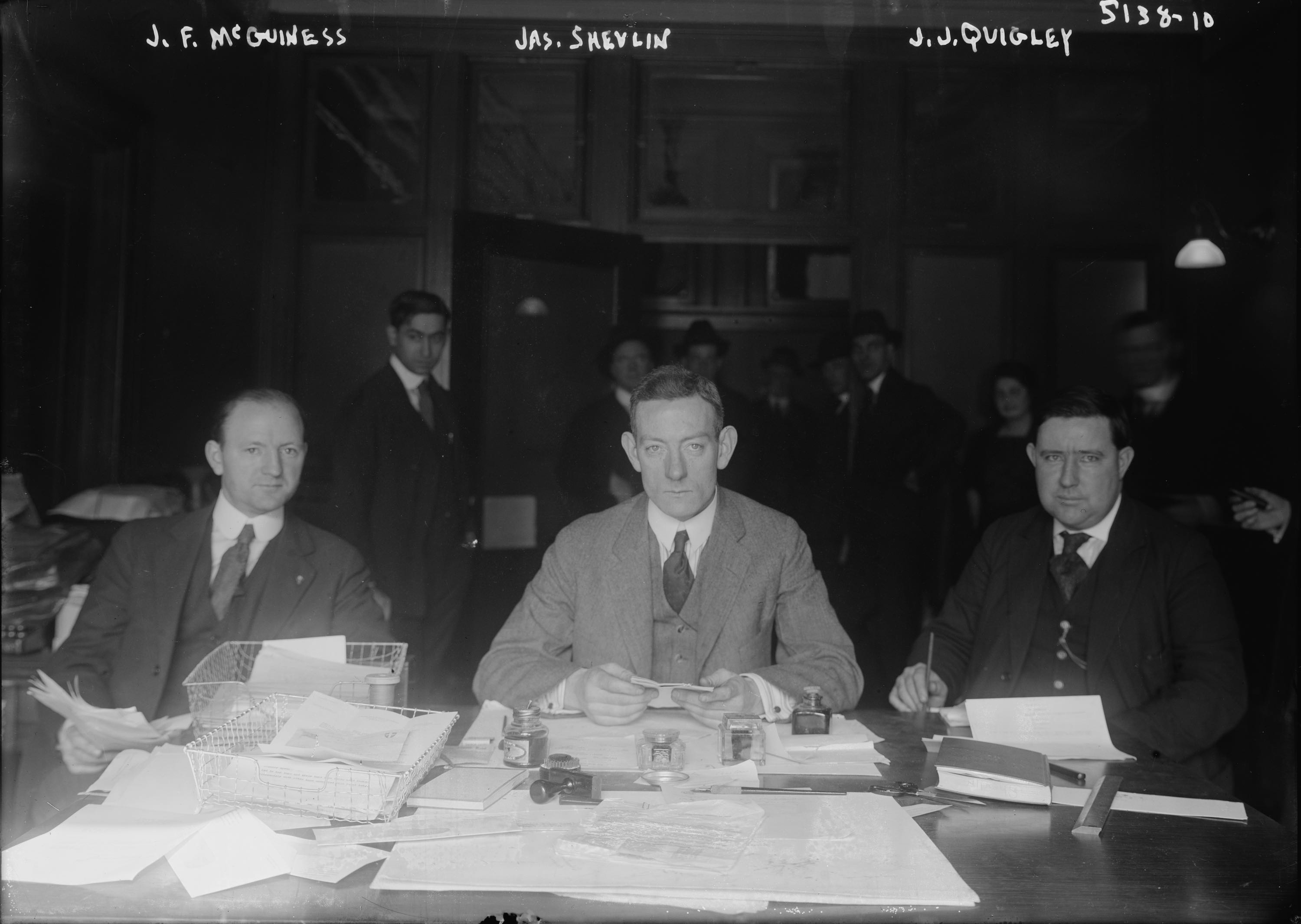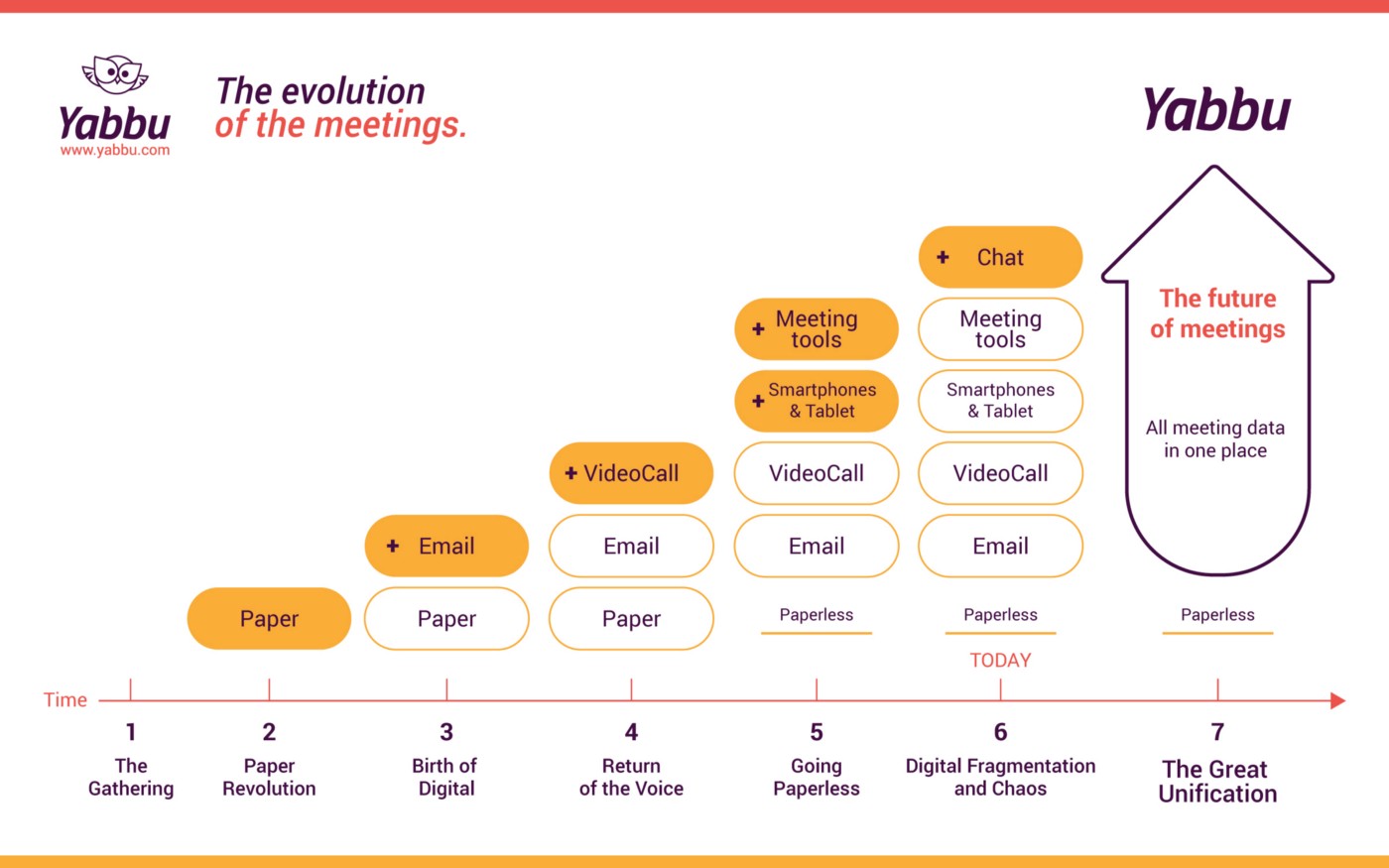
About the evolution and future of meetings
For a long time now I have been thinking about how we have been holding meetings. I have been holding meetings myself for about 30 years now and have seen how meetings have changed by the introduction of new technology. But the introduction of new technology, while in many ways a big improvement on the old ways of working, has not necessarily improved the efficiency and effectiveness of those meetings. New problems have surfaced, while old problems have remained. Let’s recap how we got here and how we can take the next evolutionary step into the future of meetings.
Meeting 1.0 — The Gathering
We hold meetings for four reasons; sharing information, discussion, decision-making and also for social reasons, bringing people together to work on a common goal. In the first stage of the evolution of meetings this meant bringing people together in one place at the same time, sharing and discussing important issues, and making plans and decisions together. This is the archetypical gathering that does not require technology. You discuss issues then and there and the main mode of communication is the spoken word.
Meeting 2.0 — Paper Revolution
The next step in the evolution of meetings came with the advent of cheap paper. This allowed for sharing information in advance. Not only the agenda, but also important documents that needed discussion and decision-making. People could learn about these in advance, think them through and come prepared. The introduction of the written word was a huge improvement on the classic gathering.
Meeting 3.0 — Birth of Digital.
The next step came with the birth of digital technology and the rise of the internet. This allowed us to distribute the agenda and attached documents much faster digitally across the globe. The tools we used for this were mainly email, Microsoft Word and the PDF format. The advent of cheap printing also played a big role in this. We could share the files digitally and print them everywhere when needed. We also saw rudimentary forms of digital discussion through email. We’re talking about the Nineties here and the first years of the 21st century. Paper was being replaced during the preparation, but it was still king in the meeting itself.
Meeting 4.0 — The return of the Voice
The next stage was started by the rise of cheap conference call tools like Skype, affordable laptops, the arrival of smartphones, wifi and 3G/4G. When someone could not be present at a meeting, he or she could always dial in through Skype or another conference call tool and join the meeting. Being in the same place during a meeting was no longer required.
Meeting 5.0 — Going Paperless
Around 2010 we started to go paperless. Tablets were the big enabler of this stage. Not long after the introduction of the iPad we saw the first paperless meeting tools. These were great. When you had a big meeting with lots of documents you no longer needed to carry around a huge pile of paper for during the meeting. You could fully prepare the meeting on your tablet, make notes and use the tablet for rudimentary forms of digital discussion and decision-making. We still primarily used email for that, but we also saw the rise of simple chat solutions, sometimes incorporated in meeting tools, but also through tools like WhatsApp. You could now fully prepare and hold a face-to-face meeting with support of digital tools.
Meeting 6.0 — Digital fragmentation and Chaos.
In the last ten years we’ve seen an increasing number of digital tools with ever more professional features. The number of available tools has grown so much, that it has led to fragmentation and chaos. Sharing information, discussion and decision-making can be done with support of many different tools and this has had the effect of blurring what we mean when we are talking about having a meeting. Especially short, simple and routine meetings are now being replaced by other forms of communication.
We’re using email, WhatsApp, Slack and other business chat tools, we’re also using meeting tools, collaboration tools, project management tools, content management tools, social media and more to share information, discuss and make decisions. The boundaries of place and time have fully been broken. At the same time we’re still organising the classic meeting where we meet face-to-face. We do this out of habit, but also because we feel that it is still the best way to make sure the social aspect of teamwork is not lost. Sometimes you want to see your colleagues in person, see how they are and see them in the eye about important issues.
And this is where the feeling of unease enters the picture. A lot of people feel lost with in the current fragmented situation. We often hear the comment, please no, not another digital tool! The multitude of communication possibilities has actually decreased our focus and effectiveness. Complaints about bad meetings are on the rise. Bad choices are made out of frustration, like organisations that replace meetings with chat tools like Slack or MS Teams. Other organisations are investing in professional conference call systems, but at the same time forget basic stuff like creating an agenda and writing down decisions. Another sign of the times is the call to go back to basics and have device-free meetings, or stand-up meetings, or walking meetings in the park and the like.
This is where we are now and we need to acknowledge that we’re at a crossroads. We think we know how to have effective meetings, we think we have all the tools we need, but in reality we’re making a mess of it.

Meeting 7.0 — The Future of Meetings: The Great Unification
I believe it is time to take the next step in the evolution of meetings and this step is all about unifying the meeting process. Just like the first stage (The Gathering), which was one single process, we need to forge together the current fragmented meeting process into one single process.
First we need to bridge the gap between digital tools and the classic face-to-face meetings. At Yabbu we tried to do this by creating a digital tool that supports both. To reflect this we now talk about a session instead of a meeting. A session starts online and it can close online if all topics can be dealt with online, or it can come to a close with a face-to-face meeting for those topics that are too complex for an online discussion. Yabbu is used to share information, discussion and decision-making during the online preparation and it is also used during the meeting to make notes for the minutes and to immediately record decisions and tasks.
Which brings me to the second type of unification, unifying all communication in one tool, from the beginning when we announce the meeting, to sending out the minutes. When you use three or four different communication tools for one process, arguments get scattered around and you lose sight of what was said when and where. I believe we need to make hard choices and ditch all those different channels as much as possible and choose one to replace them all. When all communication is centralised, like it is in Yabbu and discussions are directly tied to agenda items, it replaces most chat and email discussions. Unifying all meeting related communication in one tool also makes that communication much more goal oriented and to the point. We all know about endless chat sessions where you don’t know if a decision was made or not. We all know about email threads that spin out of control. It is time to quit those tools and realise that meeting related communication needs to be embedded in a proper meeting tool. It’s the only way to organise an efficient and effective unified process.
At Yabbu we see the meeting as one single process that you can improve and this first and foremost means unifying digital and face-to-face and unifying all communication in one tool. It’s the only way to escape current digital fragmentation and take the next step into the future of meetings.